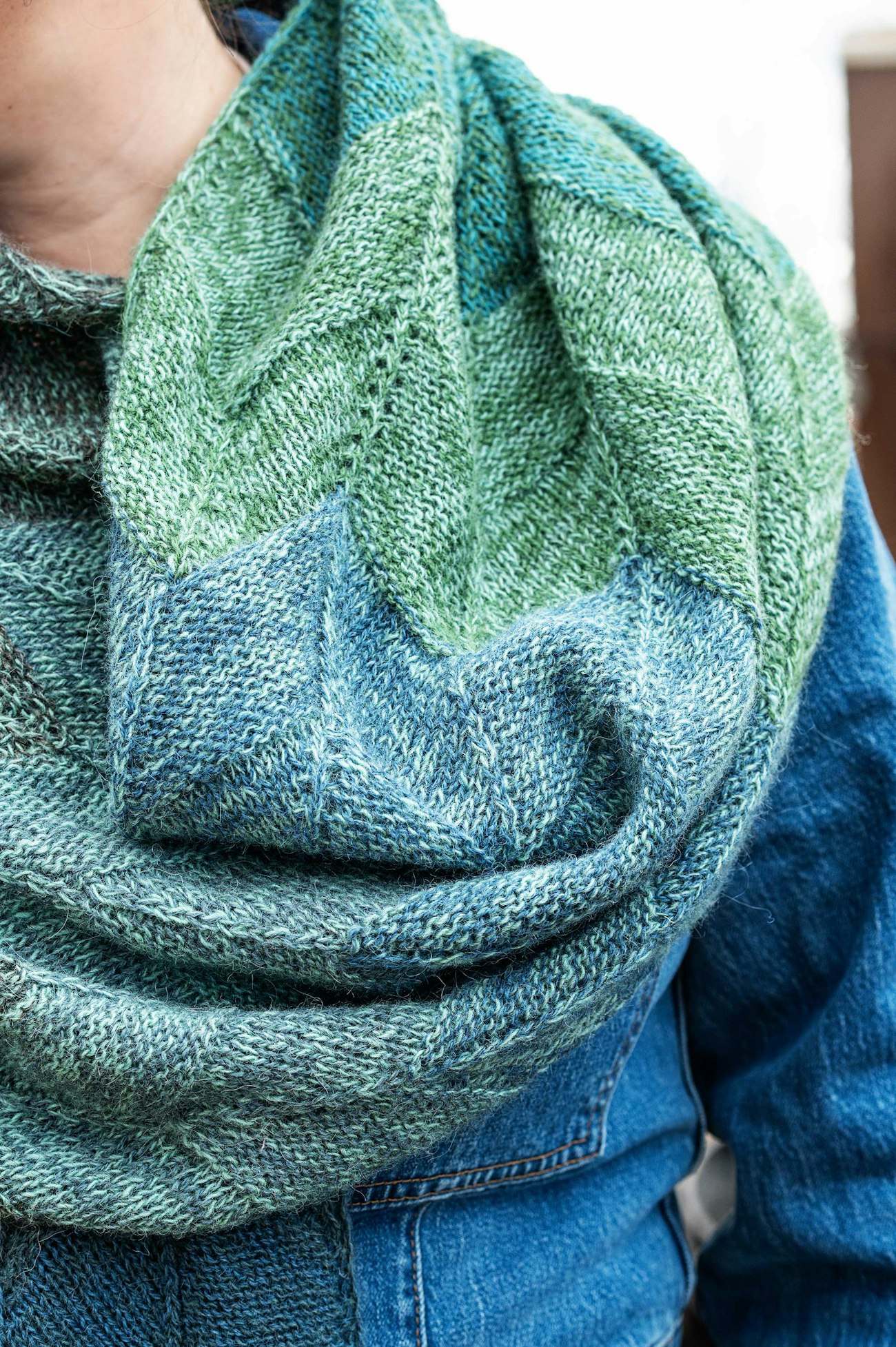Marled yarns are all about color mixing—there might be colors mixed (but still visible) in the fiber as it is spun, or singles of different colors might be plied together, or multiple yarns of different colors might be held together as the fabric is created. Marled effects can range from gloriously haphazard to carefully planned.
 By holding two different colors of yarn together as you knit, a marled effect is created. Photo by Matt Graves
By holding two different colors of yarn together as you knit, a marled effect is created. Photo by Matt Graves
In Cecelia Campochiaro’s Parastripe Shawl, she is creating complex marls by using eight colors and two yarn textures. That might sound complicated, but she makes it easy. There are just two rules that guide the color shifts:
- You are always holding two yarns at a time—one wool and one alpaca.
- One of the two yarns changes at the beginning of each pattern repeat.

Color + Texture
Cecelia is also exploring texture here. Starting with the yarns—Spinni and Alpaca 1 from Isager—she is working with a wool singles and a slightly fuzzy alpaca. This texture difference boosts the marled effect in this simple yet sophisticated chevron motif. Cecelia’s reversible chevron pattern not only complements the marled gradient, but it also makes this shawl easy to wear and enjoy.
—Kate
Kate’s Tips
Stay Organized: The eight yarns used in the shawl are identified by a letter—A to H. You can either attach a label to each ball using a locking stitch marker or you can create a key. I use an index card or piece of folded scrap paper and create eight holes using a hole punch or tapestry needle. Tie on a short piece of yarn and then label.
Even Tension: When working with multiple yarns, tension needs to be evenly applied to both. If you have yarns that are wound differently or one feels like it is pulling more than the other, simply pull out a yard or two of both yarns together into a little puddle before you start knitting. When you’ve knitted that prepared section of yarn, repeat.
 Cecelia uses a spaced long-tail cast-on and chain selvedges to create tidy, stretchy edges. Photo by Matt Graves
Cecelia uses a spaced long-tail cast-on and chain selvedges to create tidy, stretchy edges. Photo by Matt Graves
Learn More
Tutorial Spaced Long-Tail Cast-On: Hack This Classic CO
Article Alpacas and Llamas and Paco-Vicuñas!
Article Tweeds, Heathers, and Marls: What’s the Difference and What to Knit
Subscribers can find the Parastripe Shawl in the Farm & Fiber Knits Library.
Also find the Parastripe Shawl in the new eBook, The Creative Color Collection.

